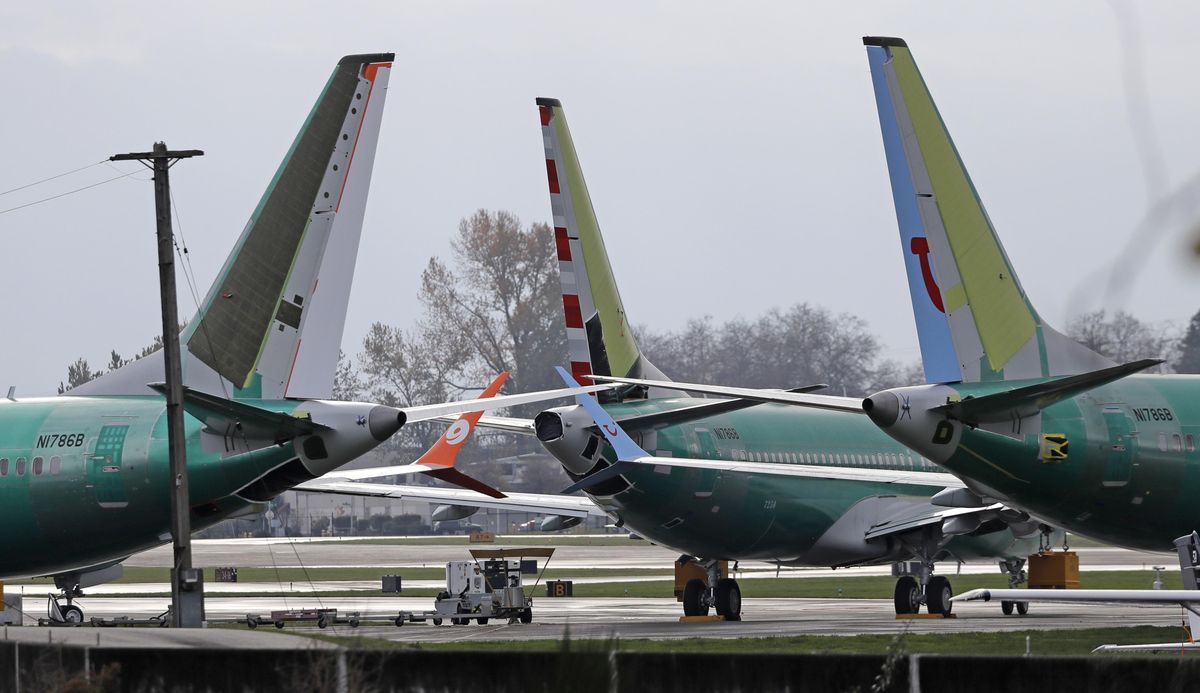Boeing, Federal Aviation Administration near completion of 737 Max 8 flight control system overhaul

Boeing and the Federal Aviation Administration are nearing completion of a long-awaited software and training overhaul for the 737 Max 8 commercial jetliner’s flight control systems, both organizations confirmed Saturday.
If the new changes are finalized and approved by the FAA on time, they could mark an early step toward remedying the safety concerns that have gripped the global aviation industry in recent months following deadly plane crashes in Indonesia and Ethiopia.
The software and training fixes were announced by Boeing on March 11 after the FAA called for them in an official airworthiness directive. The two organizations have been developing the fixes for months but did not publicly commit to them until after a second deadly crash on March 10 involving a Boeing 737 Max 8 jet.
“We’ve been working diligently and in close cooperation with the FAA on the software update,” a Boeing spokesman said in a statement. “We are taking a comprehensive and careful approach to design, develop and test the software that will ultimately lead to certification.”
The FAA demanded the software fixes be completed “no later than April” and says it will evaluate the software fixes next week.
“We expect the software fix early next week; and we will evaluate it at the time,” an FAA spokesman said, drawing a contrast to earlier Boeing statements that characterized the move as a “software enhancement” designed to “make an already safe aircraft even safer.”
The news comes as Boeing and the FAA are facing a rare safety crisis that has shaken the confidence of international regulators. On March 10, a Boeing 737 Max 8 operated by Ethiopian Airlines crashed just minutes after takeoff, killing all 157 aboard. It came just months after another Boeing plane, also a 737 Max 8, crashed off the coast of Indonesia, killing 189. Aircraft regulators around the world grounded the Max 8 and Max 9 jets within days.
The two crashes occurred under similar circumstances. In each case, the plane veered up and down in the minutes after takeoff before turning into a fatal nose-dive. The FAA concluded on March 13 that it saw similarities between the two crashes based on recently analyzed satellite data and evidence investigators found in the wreckage in Ethiopia. Although the precise causes of the crashes remain unknown, Boeing has faced harsh criticism from U.S. pilot groups, advocacy organizations and lawmakers over a decision to add a flight control system called the Maneuvering Characteristics Augmentation System, or MCAS, into the 737 Max 8 without notifying pilots.
The MCAS is designed to account for changes to the plane’s engines. It is supposed to prevent the plane from stalling by automatically nudging its nose downward in response to information fed from the plane’s external sensors. Boeing did not detail the system in pilot training for the 737 Max, however, which pilots said left them in the dark about how to respond to potentially dangerous scenarios.
The circumstances under which Boeing designed the plane and the FAA’s oversight of it are the subject of numerous lawsuits, congressional inquiries and a criminal investigation.